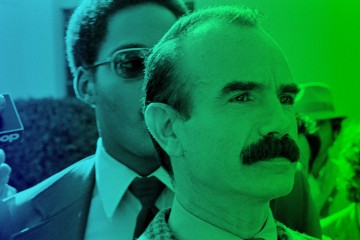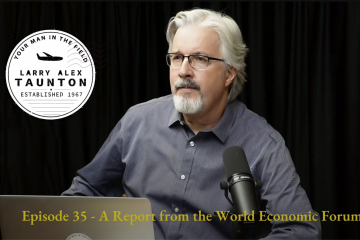(Previously published in USA Today Christmas 2011)
Richard Dawkins, the world’s most famous atheist, is at it again. This time, Oxford University’s professional unbeliever is out to spread holiday cheer with a new children’s book, The Magic of Reality. Christmas is, after all, the season of magic, and lest children confuse sugar plum fairies and flying reindeer with the observable and repeatable, the professor has loaded neither toys nor goodies on his sleigh but a heavy dose of “rational skepticism.” So, gather around, children, and hear a new tale of Christmas!
Since the publication of his 2006 best-seller, The God Delusion, Dawkins has been railing against religion and its many manifestations. Whether you believe in Yahweh, Allah, Jesus Christ or Santa Claus, they are all the same in Dawkins’s view: fictitious products of a “mental virus.” More than that, Dawkins thinks that people of faith – any faith – are potentially dangerous and must be opposed. Disregarding all nuances of religious beliefs and practices, Dawkins seems to think that the Amish might just as easily have flown planes into the Twin Towers as a band of radical Muslims. So, to save the next generation from this sort of religious extremism — it is all religious extremism — Dawkins offers a 271-page volume intended to help the young know the truth of things, or, more accurately, the truth as Richard Dawkins understands it.
The structure of the book is simple. Each chapter begins with a question, such as “What is a rainbow?” and presents an answer that the Sumerians or the Tahltan people of western Canada might have given. He then follows this up with a scientific explanation. Illustrations are added for clarification and are mostly attractive, even if some of them seem to have been inspired by a Wes Craven film. The implicit thesis of the book is that religious explanations of “reality” are silly and utterly incompatible with the scientific endeavor.
This format is not wholly ineffective if it is Dawkins’s purpose, as it seems to be, to airbrush out those things that don’t fit neatly into his thesis. Thus, he at once hails Sir Isaac Newton as perhaps “the greatest scientist ever” while ridiculing people who believe in God. That Newton was a deeply religious man is conveniently ignored. But ignoring things is necessary if the thesis of the book – indeed, if the thesis of Dawkins’s life – is to stand. This leads him to profoundly mischaracterize the religious views he presents.
Furthermore, he repeats his error of seeing religion as monolithic. Jewish traditions are lumped with those of the Tasmanians, the Christian story of Jesus with that of Cinderella, because one is as absurd as the other.
Never mind, kiddies, that it was the Judeo-Christian tradition (not Cinderella) that gave rise to the very science Dawkins occasionally practices and the civilization from which he draws most of his moral and intellectual sensibilities. Dawkins seems to think that revealing such details to children is to risk religious fanaticism in them at some future date. Or does he really just not know these apparently trivial bits of history?
Dawkins’s capacity for self-delusion on this point was revealed with startling clarity at the Oxford Museum of Natural History where, in 2008, I chaired a debate between him and his Oxford University colleague, Professor John Lennox. When Lennox, a mathematician and philosopher of science, asserted that the museum had a Christian heritage, Dawkins heaped scorn on the very idea. He carried the point by sheer force of personality.
But he was wrong.
The museum was, in fact, founded with money from the sale of Bibles. Contributors deemed it an appropriate expense and means of glorifying God and his creation. But Dawkins would have none of it. To him, religious people must be as opposed to science as he is to religion.
Factual errors aside, the irony of Dawkins’ crusading is that he is crusading at all. In so doing, he has unwittingly mimicked the Christian missionary and evangelistic efforts that he so hates. Many readers will no doubt recall his campaign to plaster the sides of London buses with the message: “There’s probably no God. Now stop worrying and enjoy your life.” The clear purpose of that initiative and many others is to convert the unenlightened.
Indeed, Dawkins is an atheist evangelist, preaching his faith with the fervor of an Old Testament prophet. He portrays himself as a kind of liberator, freeing the world from its bondage to religion while building his own megachurch of unbelief. Dawkins once told me that he found the first of the Ten Commandments – “You shall have no other gods before Me” – to be the most personally offensive. At the time, I was not sure what he meant.
Since then, however, it has become clear that Dawkins, having aspirations of his own, did not like this exclusivity clause. Something of an object of worship himself, his website plays host to the largest atheist congregation outside of North Korea, promoting all things Richard Dawkins: books, videos, trinkets and, of course, atheism — or, more precisely, Richard Dawkins’ version of atheism. It has become the basis of a movement. His converts have conferences and Sunday meetings, and they have even created campus groups to reach the lost.
Nowhere has this mimicry been more laughably apparent, however, than in Dawkins’ efforts to proselytize children. In 2009, he helped launch – no kidding – an atheist summer camp. One imagines children roasting marshmallows as Dawkins reads some titillating passage from The Origin of Species or, more likely, The God Delusion. That must not have worked out too well, so the professor wrote The Magic of Reality, which is, in effect, The God Delusion for kids (though somewhat more insightful and less bombastic).
Of course, it was Dawkins who labeled as child abusers those parents and teachers who instruct their charges in a given view of life. And yet The Magic of Reality does precisely that. According to Dawkins, it is meant to be read by children or, better yet, by parents to their children. It is a sort of anti-religious catechism. This is not because the book is void of factual or even interesting information; it is, rather, due to the context in which Dawkins arranges the facts, slanting the table in a manner that is oddly reminiscent of those he accuses of indoctrinating the young. Apparently, indoctrinating the young is an acceptable vocation provided you believe that all truly wise men do not follow a star to Bethlehem, but to North Oxford.
In the final analysis, The Magic of Reality lacks, well, the magic that a children’s book must possess. On the contrary, Dawkins would rob children of the true magic of life: meaning. One can always hope that Dawkins, like the Grinch, will realize that the magic of Christmas — and that of reality itself — is not found in the tangible. Then again, maybe Dawkins is seeking to become atheism’s Oxford equivalent to C.S. Lewis, whose stories continue to excite the imaginations of young and old alike some five decades after his death. If so, the Lewis estate need not worry. The place of the pipe-smoking inventor of Narnia within the canon of children’s literature is firmly intact.
WAIT! Do you appreciate the content of this website? We are a nonprofit. That means that our work is made possible and our staff is paid by your contributions. We ask you to consider supporting this important work in an ongoing basis or, if you prefer, perhaps you will drop a few buck in our “tip jar.” All contributions are tax-deductible.


